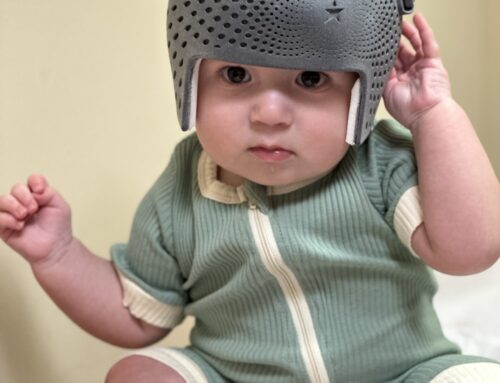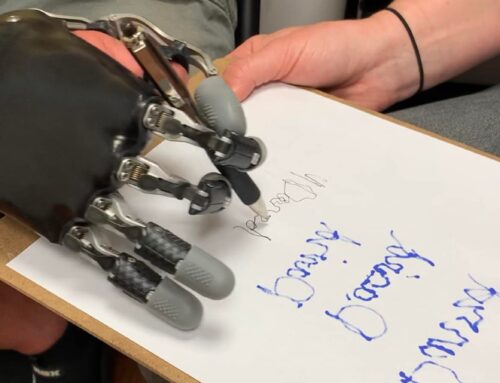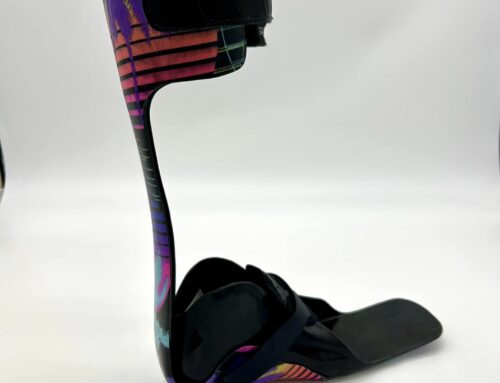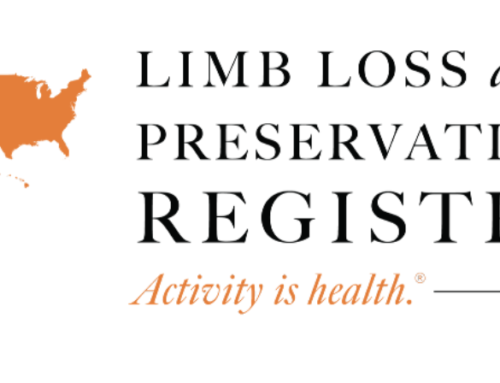What is a Prosthesis
A Prosthesis is an artificially created device designed to replace a missing or amputated part of the body. It fulfills an aesthetic purpose, such as filling in the place of a missing limb in a pant leg or dress shirt, but more importantly, it helps an individual regain the movement and function that was missing or was lost with the limb amputation. Westcoast Brace & Limb (WCBL) prosthetists are experts at creating the perfect prosthesis to fit every patient’s needs, lifestyles, and goals.
Overview of Prosthetic Devices
Prosthetic devices, or prostheses, come in many shapes and forms. Lower extremity and upper extremity prosthetic devices are the most common and easily recognizable external prostheses. These encompass prostheses for the arms, feet and hand digits, and legs. There are also internal prostheses, like artificial heart valves or pacemakers and maxillofacial devices to replace damaged cartilage in the ears or nose.
Both types of prosthetic devices help patients regain some control of motion, correct deformities, provide much-needed support to a weak limb, and even save their lives. But in the interest of a more focused discussion, we’ll concentrate on the different prostheses for external use in this blog.
Types of Prosthetic Devices
1. Upper Extremity Prosthetic Devices
Also known as upper limb prosthetic devices, these prostheses take the place of amputated upper limbs.
Trauma and surgery are the most common causes of amputations in the upper extremities. Trauma-related amputations from motor vehicle accidents, explosives, fire, and sub-zero temperatures make up 75 percent of cases that require upper limb prosthetic devices. Surgical amputations, in comparison, are planned and necessary. An example is when a patient suffers a form of cancer in the upper extremities and must be removed to prevent it from spreading further.
There are several types of prosthetic devices for the upper extremities:
- Body Powered – This is the most conventional prosthesis for upper limbs. The prosthetic device is attached with a harness. A hook-and-cable system then “reads” the upper arm, shoulder, and chest movements, translating the signals to the prosthetic hand. Body-powered prosthetic hands can flex and move like real fingers, even grip and lift heavy objects.
- Myoelectric – Uses a battery source and microprocessors to amplify electromyography (EMG) signals in the remaining arm muscles, allowing you to control the wrist or hand.
- Passive Functional – This is primarily a cosmetic prosthesis and these types of devices provide opposition for the intact limb (sound side) and can be used to hold numerous objects such as: cups, phones, pens, and utensils.
- Partial Hand and Finger – These prostheses are used with the goal of regaining functionality, WCBL provides a variety of options including full and partial mechanical fingers, power digits, and silicone. From basic daily activity uses to enhanced technology that allows patients to grip tiny objects, carry heavy items, type on a keyboard, use hand tools, etc. there is an option for every patient.
- Adaptive – Also called recreational prosthesis, these devices are created for specific activities like skiing, climbing, gymnastics, playing musical instruments, etc.
- Hybrid – A combination of myoelectric and body-powered prosthetic devices. These can be extremely functional for above-elbow (transhumeral) amputees.
The arms and torso cover a wide range of motion, and most patients want to regain as much movement control as possible. However, prosthetists must consider many factors when recommending or designing upper extremity prosthetic devices other than what the patient wants.
Patients must consult prosthetists who are experienced and equipped to perform a variety of functional tests to ensure that the final prosthesis meets the independence, lifestyle goals, and mobility needs of the patient. Even more importantly, the prosthetist should be technically skilled in creating a socket that both fits comfortably and works properly with each patient’s distinct anatomy. Westcoast Brace & Limb has worked with many patients with unique needs and requirements and can provide you with custom-made, high-tech prostheses for toes, feet, fingers, hands, arms, and maxillofacial needs.
2. Lower Extremity Prosthetic Devices
Prosthetic devices for the lower extremities offer both cosmetic and functional purposes. Prosthetists can design them as close to a natural leg as possible or prioritize function and mobility. The socket design is the most important part of the lower extremity prosthesis as this is where the prosthesis interacts with the patient’s remaining/residual limb. The socket must fit properly to ensure the best possible outcome. WCBL practitioners go to great lengths to ensure our patient’s functional and socket comfort goals are achieved.
Lower extremity prostheses include the following:
- Above Knee – Transfemoral prosthesis are the most common above-knee variants, occurring in the thigh, through the femoral bone (femur).. Custom prostheses are also necessary for hip disarticulation and hemipelvectomy patients whose entire femoral bone has been amputated.
- Knee Disarticulation – A knee disarticulation (sometimes called a ‘through knee’) is an amputation that involves keeping the femur intact. However, the tendons and ligaments attaching the femur (thigh bone) to the tibia (shin bone) are detached. There are both advantages and disadvantages to prosthetic devices at this level. The longer length of the residual limb equals more control over the prosthesis, which can translate into more stability and a better gait. Despite the advantages, this level presents a challenge to the patient and the prosthetist. The end of the femur is larger than the area above it, which means it can be difficult to accommodate this area. Since the femur is fully intact, it can lower the person’s knee center compared to the opposite side and limit componentry options.Below Knee – Also called transtibial, occurring between the knee joint and ankle joint, this level includes prosthetic devices for transtibial (across the shins), symes (at the ankle joint), and transmetatarsal (across the toes) amputations. Most patients who receive transtibial amputations are very successful prosthetic wearers. There are numerous socket styles, suspension systems, foot options, and designs available for transtibial amputees.
Lower extremity amputations have become increasingly more common over the years and the componentry available to compensate for the loss of limb and function has also progressed significantly along with it. Our practitioners go to great lengths to ensure our patient’s functional and socket comfort goals are achieved.
For patients who desire more than function out of their prostheses, there is a more lifelike option that resembles the look and feel of natural skin This option is described in the next section.
These custom silicone prosthetic devices resemble the shape, color, and texture of real human skin. Silicone prostheses combine form and function in a comprehensive design that addresses the psychological and physical needs of the user.
High Realism Silicone prostheses are designed to be unnoticeable by others. Each prosthesis is hand-crafted and hand-painted to match the patient’s skin tone and appearance. Highly skilled Anaplastologists provide patients with the most realistic, aesthetically pleasing, and functional passive restoration available. Every detail is taken into account during the painting of the prosthetic device, even accounting for features such as freckles and hair.
High realism silicone prosthetic devices are ideal for amputations of maxillofacial features (e.g., nose, ears), eyes, fingers, toes, partial hand or foot, and adaptive devices. These passive devices are not only realistic in appearance, they also have important functional capabilities. The function of these devices include activities such as pushing, pulling, stabilizing, supporting, light grasping and typing.
Obtain Custom Prosthetic Devices from Expert Prosthetists at Westcoast Brace & Limb
Amputations are life-changing. They can limit a person’s physical capability and make them dependent on others for simple things like writing, calling, changing their clothes, and getting from living room to bedroom, and other activities of daily living.. Fortunately, today’s amputees can regain their independence and mobility thanks to the technology and function of custom-made and fitted prosthetic devices.
The success of a prosthetic device greatly depends on the patient’s commitment to master its use. However, prosthetists also play a huge role in an amputee’s journey. Choosing your prosthetist is an important decision. Patients need to choose someone they feel comfortable with and trust. They will see their prosthetist multiple times during their first year. A good prosthetist must have patience and skill to create a prosthesis that meets their patient’s needs and goals, while providing a comfortable and functional socket.
We offer several different prosthetists within our practice, so we can best meet our patients’ physical and emotional needs. Let us show you why we are the prosthetic device leaders, in the Tampa Bay area and beyond. Since 1981, our company has provided state-of-the-art orthotic and prosthetic devices to people of all ages, from infants to seniors. Through our commitment to restoring bodies and rebuilding lives, we work to empower individuals with the tools they need to retain or regain their independence.
To schedule an appointment with one of our expert prosthetists call 1-888-552-2555. You can also reach us via our Contact Page.






